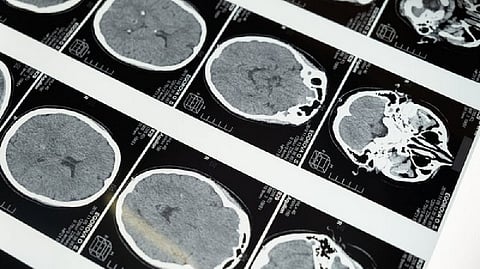

HEIDELBERG: Autism-related behavioural disorders are linked to a wide range of genetic changes. Scientists have discovered a new molecular cause for this illness. MYT1L, a transcription factor, generally protects nerve cells' molecular identity.
When it is turned off genetically in human nerve cells or mice, it causes functional abnormalities and symptoms associated with autism. In mice, a medication that blocks sodium channels in the cell membrane can restore the effects of MYT1L failure and improve functional and behavioural problems. The study led by researchers Hector Institute for Translational Brain Research (HITBR) and result
Disorders from the autism spectrum (ASD, autism spectrum disorders) are not only manifested by impairments in social interaction, communication, interest formation and by stereotypical behavior patterns. This is often accompanied by other abnormalities such as epilepsy or hyperactivity. Scientists are intensively searching for the molecular abnormalities that contribute to this complex developmental disorder.
A multitude of genetic factors that influence the molecular programs of the nerve cells have already been linked to the development of autism. Moritz Mall from the Hector Institute for Translational Brain Research (HITBR) has long been researching the role of the protein MYT1L in various neuronal diseases.
The protein is a so-called transcription factor that decides which genes are active in the cell and which are not. Almost all nerve cells in the body produce MYT1L throughout their entire life span.
Mall had already shown a few years ago that MYT1L protects the identity of nerve cells by suppressing other developmental pathways that programme a cell towards muscle or connective tissue, for example.
Mutations in MYT1L have been found in several neurological diseases, such as schizophrenia and epilepsy, but also in brain malformations. In their current work, which is funded by the European Research Council ERC, Mall and his team examined the exact role of the "guardian of neuronal identity" in the development of an ASD.
To do this, they genetically switched off MYT1L - both in mice and in human nerve cells that had been derived from reprogrammed stem cells in the laboratory. The loss of MYT1L led to electrophysiological hyperactivation in mouse and human neurons and thus impaired nerve function. Mice lacking MYT1L suffered from brain abnormalities, such as a thinner cerebral cortex.
The animals also showed several ASS-typical behavioral changes such as social deficits or hyperactivity. What was particularly striking about the MYT1L-deficient neurons: They produced an excess of a sodium channels that are normally mainly restricted to the heart muscle cells. These pore-shaped proteins allow sodium ions to pass through the cell membrane and are thus crucial for electrical conductivity and thus also for the functioning of the cells.
If a nerve cell produces too many of these channel proteins, electrophysiological hyperactivation can be the result. In clinical medicine, drugs that block sodium channels have been used for a long time. These include the agent lamotrigine, which is supposed to prevent epileptic seizures.
When MYT1L-deficient nerve cells were treated with lamotrigine, their electrophysiological activity returned to normal. In mice, the drug was even able to curb ASD-associated behaviors such as hyperactivity.
"Apparently, drug treatment in adulthood can alleviate brain cell dysfunction and thus counteract the behavioral abnormalities typical of autism - even after the absence of MYT1L has already impaired brain development during the developmental phase of the organism," explains Moritz Mall.
However, the results are still limited to studies in mice; clinical studies in patients with disorders from the ASD spectrum have not yet been conducted. The first clinical studies are in the early planning phase.
Visit news.dtnext.in to explore our interactive epaper!
Download the DT Next app for more exciting features!
Click here for iOS
Click here for Android